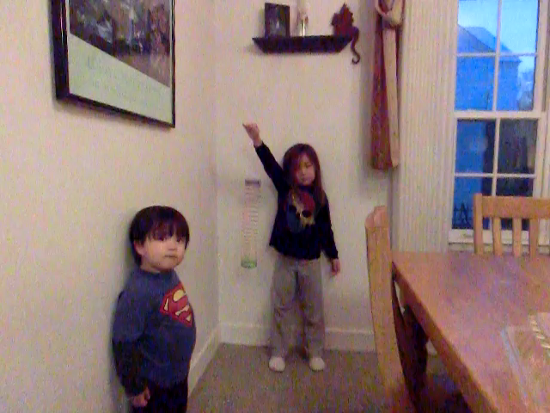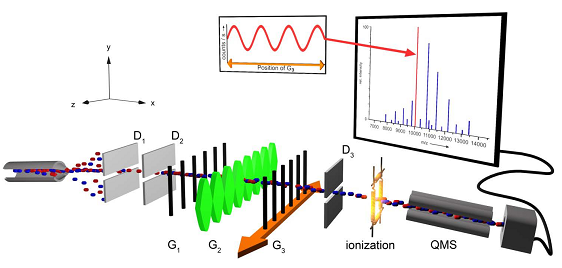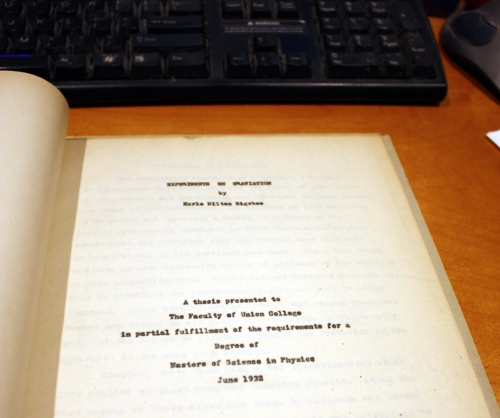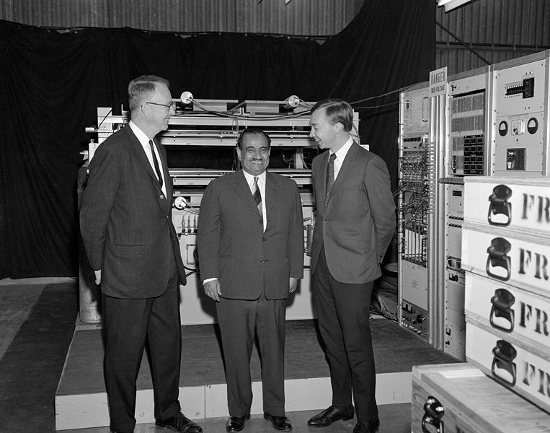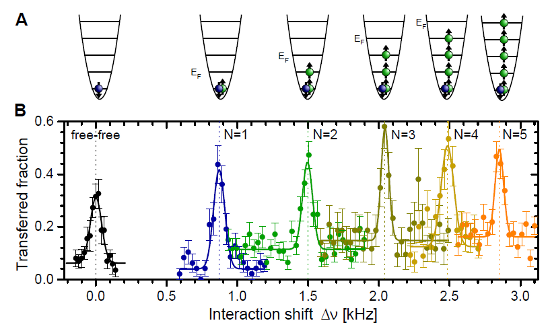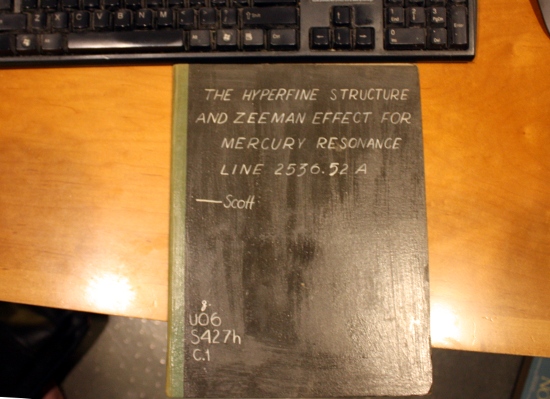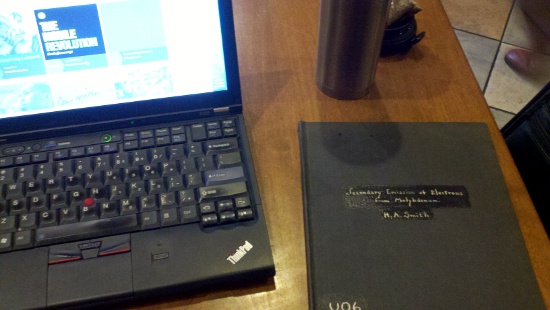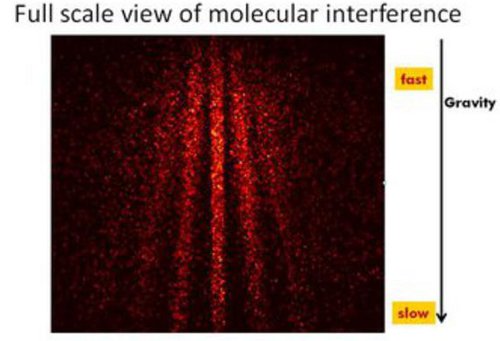I got a new camera for Christmas, not because there’s anything wrong with my DSLR, but because I wanted something that could do high-speed video. So I now have a Casio point-and-shoot camera that will record up to 1000 frames per second, woo-hoo! To break it in, I got the kids to help out by… Continue reading Physics with the Kids at 120 Frames a Second
Category: Experiment
Interference with 10,000-Particle “Particles”: “Matter-wave interference with particles selected from a molecular library with masses exceeding 10000 amu”
I’m teaching Quantum Optics this term, and one of my students picked “Atom Optics” off the list of suggested paper topics. When he asked for pointers, I said “You should check out the diffraction stuff Markus Arndt’s group does.” And just like that, a paper from the Arndt group turns up from the Arxiv Blog…… Continue reading Interference with 10,000-Particle “Particles”: “Matter-wave interference with particles selected from a molecular library with masses exceeding 10000 amu”
Old Thesis Club: Experiments on Gravitation by Earle Milton Bigsbee, 1932
One of the interesting things about the pile of old theses we found in the basement is the opportunity to look at things that nobody believes any more. Past installments of the Old Thesis Club have shown people fumbling toward an understanding of quantum physics via electron scattering and spectroscopy, but in both of those… Continue reading Old Thesis Club: Experiments on Gravitation by Earle Milton Bigsbee, 1932
Finding That There’s Nothing to Find
In 1967, a team of scientists hauled a big pile of gear– electronics, particle detectors, a giant slab of iron– into the burial chamber at the base of one of the pyramids at Giza. This sounds like a scene from a science fiction or fantasy novel– throw in the fact that their first attempt was… Continue reading Finding That There’s Nothing to Find
One, Two, Many, Lots: Investigating the Start of Many-Body Physics
Two papers with a similar theme crossed my social media feeds in the last couple of days. You might think this is just a weird coincidence, but I’m choosing to take it as a sign to write about them for the blog. So, what are these papers, and what’s the theme? One is the final… Continue reading One, Two, Many, Lots: Investigating the Start of Many-Body Physics
Quantum Erasure
When I posted congratulating the winner of this year’s Nobel betting pool, I received a gentle reminder in email that I’m a Bad Person and still haven’t done one of the posts I owe to the 2011 winners. Evan reminded me that he asked for something about the delayed-choice quantum eraser, so let’s talk about… Continue reading Quantum Erasure
Old Thesis Club: The Hyperfine Structure and Zeeman Effect for Mercury Resonance Line 2536.52A by Leo Wilson Scott, 1932
Having spent a bunch of time talking about heavy stuff in the science blogging community, let’s unwind a bit and kick the week off with a look back at an old Master’s thesis. This one is from 1932, and is almost certainly a draft copy, because it’s extremely cheaply bound in cardboard with the title… Continue reading Old Thesis Club: The Hyperfine Structure and Zeeman Effect for Mercury Resonance Line 2536.52A by Leo Wilson Scott, 1932
Old Thesis Club: Secondary Emission of Electrons from Molybdenum, by H.A. Smith, 1928
As noted in a previous post on Monte Carlo simulation in 1960, we recently came into possession of a large box of old Master’s theses. The bulk of these are from the 50’s and 60’s, but there are some going back much farther. As I pass these every day I’m in the office, I thought… Continue reading Old Thesis Club: Secondary Emission of Electrons from Molybdenum, by H.A. Smith, 1928
When Is a Composite Object a Particle?
Through some kind of weird synchronicity, the title question came up twice yesterday, once in a comment to my TED@NYC talk post, and the second time on Twitter, in a conversation with a person whose account is protected, thus rendering it un-link-able. Trust me. The question is one of those things that you don’t necessarily… Continue reading When Is a Composite Object a Particle?
Laser-Cooled Atoms: Ytterbium
Element: Ytterbium (Yb) Atomic Number: 70 Mass: Seven “stable” isotopes, from 168 to 176 amu. Two of those are nominally radioactive, with half-lives vastly in excess of the age of the universe. Laser cooling wavelength: 399 nm and 556 nm. Doppler cooling limit: 690 μK in the UV and 4.4 μK in the green. Chemical… Continue reading Laser-Cooled Atoms: Ytterbium
